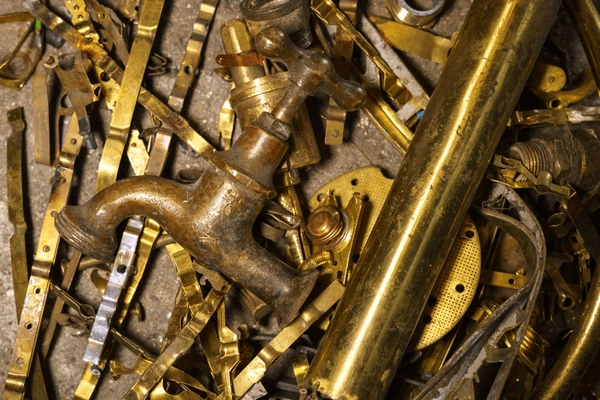Brass scrap manufacturing in India represents a critical part of the nation’s industrial and environmental efforts. With its dual focus on recycling and sustainable production, the industry is helping India balance rapid economic growth with environmental preservation. This blog delves into the details of brass scrap manufacturing, highlighting its processes, benefits, and the role it plays in global and domestic markets.
What is Brass Scrap Manufacturing?
Brass scrap manufacturing involves recycling discarded brass products into usable materials. Brass is an alloy primarily composed of copper and zinc, prized for its strength, durability, and resistance to corrosion. Instead of relying on the extraction of new raw materials, the industry focuses on repurposing existing brass scrap, a more sustainable and cost-efficient approach.
This manufacturing process reduces waste, conserves energy, and lessens the strain on natural resources, making it a vital component of India’s green initiatives.
Why India is an Ideal Hub for Brass Scrap Manufacturing
- Rich Availability of Scrap
India produces a significant amount of brass scrap from industries like construction, electronics, and consumer goods. Additionally, the country imports scrap materials from other regions, ensuring a steady supply. - Strategic Economic Importance
Brass scrap manufacturing contributes to India’s economy by providing raw materials for industries such as plumbing, automotive, and electrical components. - Sustainability Focus
With increasing global emphasis on sustainability, India’s brass scrap sector has adopted environmentally conscious practices, making it a preferred partner for global businesses seeking ethical sourcing. - Export Opportunities
Indian manufacturers play a pivotal role in the international brass market. Exported brass products find applications in diverse industries worldwide, from decorative art to aerospace technology.
The Brass Scrap Recycling Process
The process of recycling brass scrap is systematic, ensuring high-quality output with minimal waste.
- Collection and Segregation
The first step involves collecting scrap from industrial and domestic sources. Segregation is essential to separate brass from other metals and impurities. - Cleaning and Processing
Cleaning ensures the removal of contaminants like oil, dirt, and non-metallic residues. This step enhances the purity of the final product. - Melting and Refining
Sorted scrap is melted in furnaces at precise temperatures. The molten brass undergoes refining to adjust its composition for specific applications. - Casting
Refined brass is cast into various forms, such as ingots, sheets, or rods, depending on market requirements. - Quality Control
Every batch undergoes rigorous testing for strength, composition, and durability to meet industry standards.
Industries Benefiting from Brass Scrap Manufacturing
Recycled brass is versatile and finds use in numerous industries:
- Plumbing and Sanitation: Valves, faucets, and fittings
- Electronics: Circuit components and connectors
- Automotive: Radiators, fuel systems, and decorative trims
- Home Décor: Door handles, light fixtures, and furniture accents
These applications make brass scrap manufacturing an essential part of India’s industrial ecosystem.
Environmental Benefits of Brass Scrap Manufacturing
The brass scrap manufacturing industry in India contributes significantly to environmental conservation. Here’s how:
- Energy Conservation
Recycling brass uses significantly less energy compared to producing new brass from raw materials. This helps reduce carbon emissions. - Waste Reduction
Manufacturing with recycled brass minimizes the amount of scrap metal that would otherwise end up in landfills. - Resource Conservation
By recycling, the industry reduces the need for mining copper and zinc, preserving finite natural resources. - Circular Economy Promotion
The industry exemplifies the principles of a circular economy, where materials are reused, refurbished, and recycled, reducing the overall environmental footprint.
Challenges in Brass Scrap Manufacturing
Despite its advantages, the industry faces challenges that can hinder growth:
- Scrap Quality Issues
Contaminated or mixed-metal scrap can affect the quality of the recycled brass, necessitating advanced sorting technologies. - Market Volatility
Fluctuating prices of copper and zinc, the primary components of brass, can impact profitability. - Technological Gaps
Smaller manufacturers often struggle to adopt advanced recycling technologies due to high costs. - Regulatory Complexities
Import-export policies and environmental compliance regulations can create obstacles for businesses in this sector.
Addressing these challenges through innovation and policy support can unlock further potential in this industry.
The Role of Technology in Modern Brass Scrap Manufacturing
India’s brass scrap industry is increasingly adopting advanced technologies to improve efficiency and sustainability:
- Automated Sorting Systems: These systems help separate brass from other metals and impurities with precision.
- Energy-Efficient Furnaces: Modern furnaces reduce energy consumption during the melting process.
- Spectrographic Analysis: This technology ensures the exact composition of the recycled alloy, enhancing product quality.
These advancements position India as a leader in eco-friendly brass scrap recycling.
Future Prospects for Brass Scrap Manufacturing in India
India’s brass scrap manufacturing sector is poised for significant growth, driven by:
- Rising Global Demand: Increasing use of brass in construction, electronics, and renewable energy projects will drive demand for recycled materials.
- Government Support: Policies promoting recycling and sustainability are creating a conducive environment for growth.
- Infrastructure Development: Domestic initiatives like Smart Cities Mission and Make in India are boosting the need for brass products, ensuring steady demand.
These factors indicate a bright future for brass scrap manufacturing in the country.
Conclusion
Brass scrap manufacturing in India embodies the perfect balance between industrial progress and environmental stewardship. By turning waste into valuable materials, the industry supports economic growth, reduces environmental impact, and contributes to global sustainability goals.
As the world moves toward more sustainable practices, India’s brass scrap manufacturing sector is set to play an increasingly important role. Whether you are an industry professional, a buyer, or an advocate for green initiatives, understanding this industry reveals its immense potential for shaping a sustainable future.
